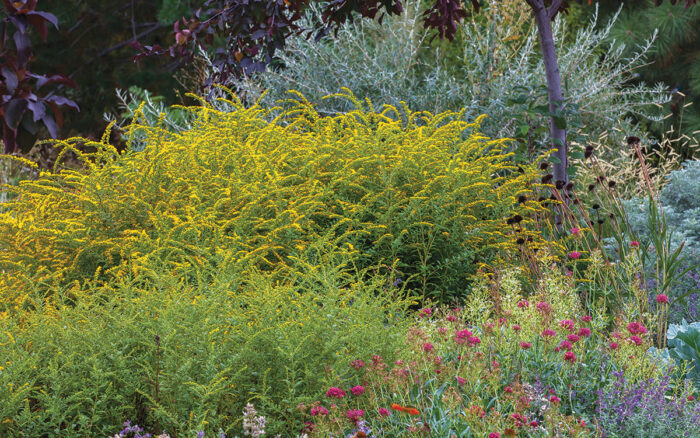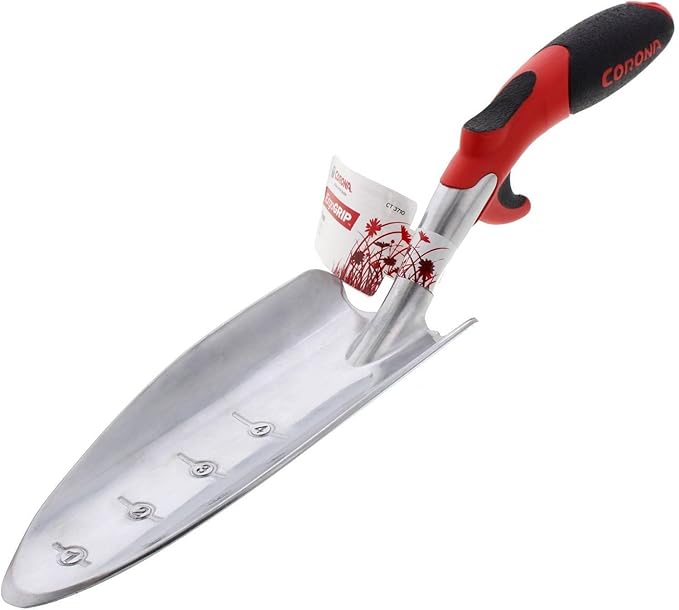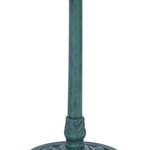
There are a number of clues that indicate the potential for a native plant to be widely adaptable. In general, this information can be found by looking at the characteristics or stressors of the plant’s original native ecosystem. There are also physical characteristics that are telltale signs of adaptability. When evaluating a native plant’s flexibility, ask these questions.
What type of ecosystem is it naturally found in?
If the answer is “wide-ranging” or “widely variable,” it’s an adaptable plant. For example, plants native to floodplains are able to survive being submerged under water for prolonged periods as well as during drought years, when watersheds shrink or go completely dry. Hence, plants that naturally grow in floodplains can be incredibly adaptable, unlike some alpine plants that are only naturally found growing in exposed mountain scree.
Is the plant’s root system shallow or deep?
If the answer is deep, it’s a pretty adaptable plant. Plants with an extensive, deep root system, once established, tap into a more sustainable well of nutrients and moisture in the lower, less disturbed soil profiles. From the desert to the prairie, the mountains to coastal dunes, perennials with strong and deep roots are the stabilizers and backbone of natural ecosystems.
Does the plant have a reputation for being aggressive in garden situations?
Many native plants flourish in a traditional garden situation, sometimes to the point of becoming weedy. Spreading by seed, creeping through rhizomes, or propagating by runners, many native plants thrive too well with nurturing. Plants with a reputation for taking over can usually grow in many types of garden situations, so they are adaptable. Be aware that they may need to be planted in an area of the garden that doesn’t receive extra water or fertilizer (or a spot that is just intentionally neglected).
Does the plant have one or more of the following attributes?
If so, it might do well in numerous growing conditions.
- Silver foliage and hairiness for drought resistance
- Compact habit for wind resistance or sometimes cold hardiness
- Seasonal dormancy for heat adaptation
- Ground covering habit for competition
- Thick and waxy leaves for tolerance to reflective heat from rock/concrete
- Colorful foliage for light intensity and fungus resistance
- Aromatic foliage for herbivory resistance
- Ability to reproduce from cuttings as an adaptation to disturbance
Plants that are not adaptable are generally native to a small geographical area or an area of relative geologic plasticity. For example, cacti perennial in the southwestern United States won’t adapt well to New England. Acid bog plants from the Southeast won’t have a chance in a Rocky Mountain state outside of a pot. Considering the ability of a perennial to adapt to heat, cold, pH, moisture, drainage, humidity, and disease pressures will help indicate how it may perform elsewhere.
David McKinney is the curator of collections and grounds at the Iowa Arboretum & Gardens, where he manages 40 acres of arboretum and 120 acres of native woodland/prairie.
Fine Gardening Recommended Products

Corona E-Grip Trowel
Fine Gardening receives a commission for items purchased through links on this site, including Amazon Associates and other affiliate advertising programs.

Alpine Corporation 28" Tall Outdoor Birdbath with Scrollwork Decoration Yard Statue
Fine Gardening receives a commission for items purchased through links on this site, including Amazon Associates and other affiliate advertising programs.

Lee Valley Garden Knife
Fine Gardening receives a commission for items purchased through links on this site, including Amazon Associates and other affiliate advertising programs.



















Comments
Log in or create an account to post a comment.
Sign up Log in